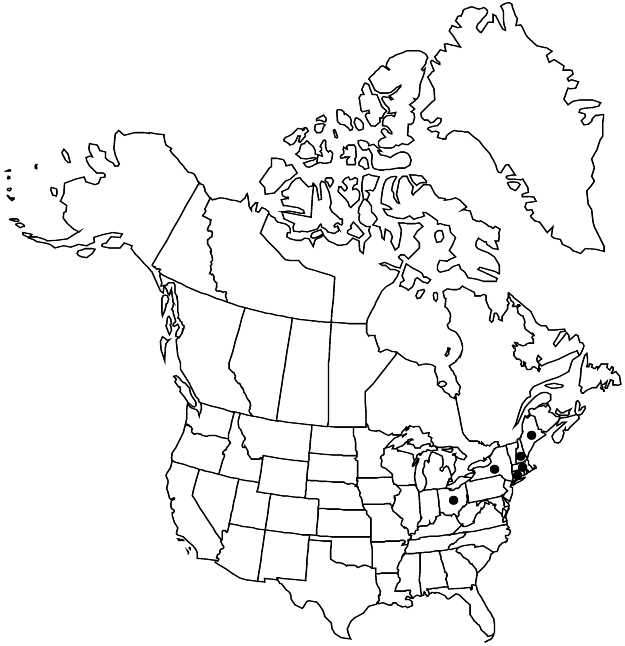Silene viscaria subsp. viscaria
Plants perennial; taproot stout, branched; caudex compact, multicapitate. Stems erect, simple proximal to inflorescence, 30–90 cm, glabrous, viscid, especially at nodes. Leaves: basal numerous, tufted, petiolate, blade oblanceolate to linear-oblanceolate, 4–15 cm × 2–10 mm (including petiole), apex acute, glabrous, ciliate at base; cauline in 2–4 pairs, connate proximally, sessile. reduced distally, blade linear-lanceolate, 2–10 cm × 2–8 mm, apex acute, glabrous, ciliate at base. Inflorescences paniculate, consisting of short, interrupted cymes, narrow, bracteate, bracteolate; cyme 3–10-flowered, proximal ones pedunculate; peduncle to 3 cm; bracts leaflike, to 3 cm; bracteoles broadly lanceolate, 3–10 mm, margins membranous, apex acuminate. Pedicels shorter than calyx, glabrous but viscid. Flowers 14–22 mm diam.; calyx purple, obscurely veined, narrowly campanulate in flower, 6–10 × 3–4 mm, clavate in fruit, 10–15 × ca. 5 mm, papery, puberulent, lobes ovate, ca. 1.5 cm, margins narrow, membranous, apex obtuse; corolla purple or dark pink (rarely white), ca. 11/2–2 times calyx, clawed, claw equaling calyx, limb spreading, obovate, entire or slightly notched, 5–9 mm, appendages 2, oblong, 3 mm; stamens shortly exserted; stigmas 5, shortly exserted. Capsules ovoid, equaling calyx, opening by 5 teeth; carpophore 3–5 mm. Seeds dark brown, reniform, 0.3–0.5 mm, finely tuberculate. 2n = 24 (Europe).
Phenology: Flowering early summer.
Habitat: Roadsides, waste ground, fields
Elevation: 0-500 m
Distribution

Introduced; Conn., Maine, Mass., N.H., N.Y., Ohio, Europe.
Discussion
Subspecies viscaria is an attractive garden plant similar to S. suecica but somewhat larger and sturdier with viscid pedicels. It occasionally escapes but does not persist.
Selected References
None.